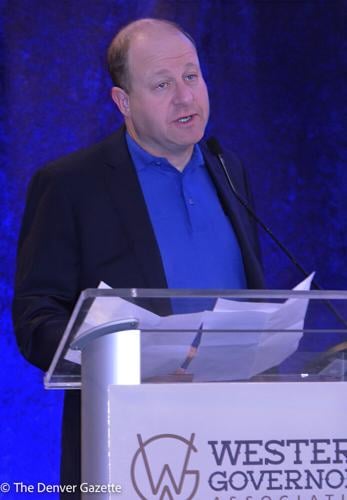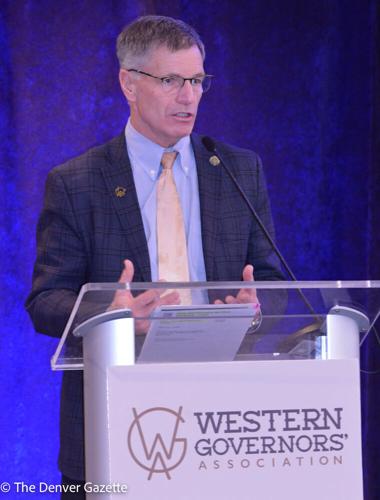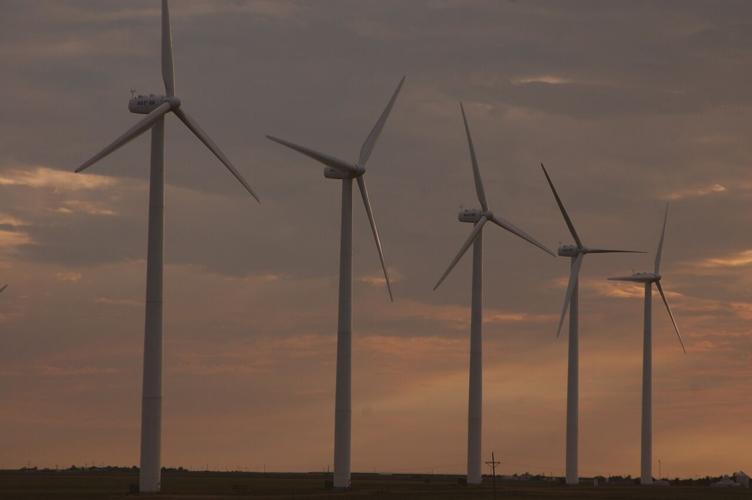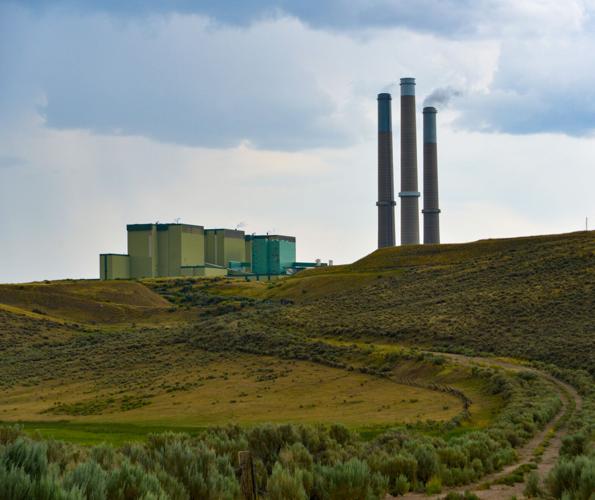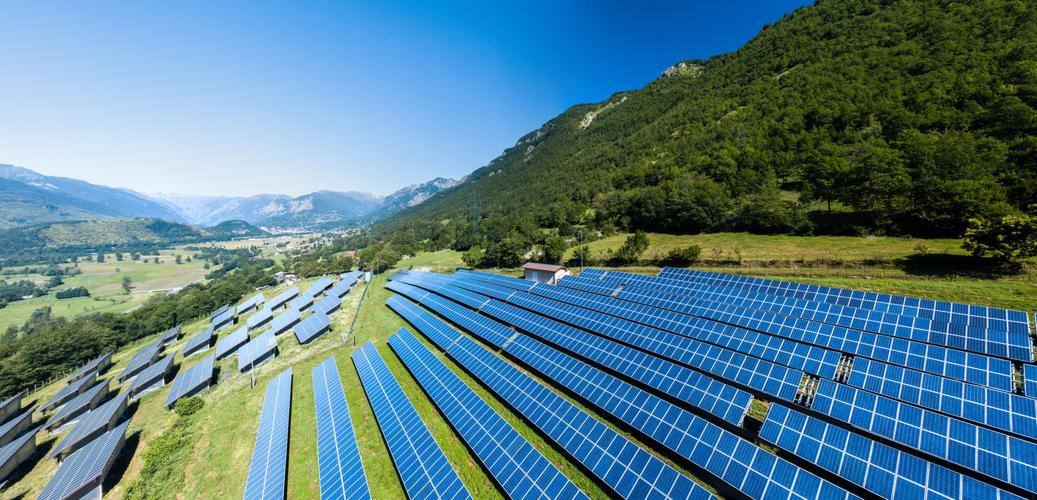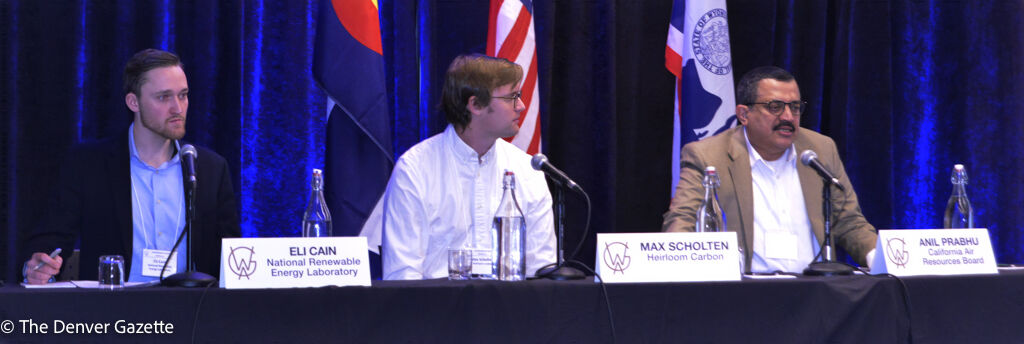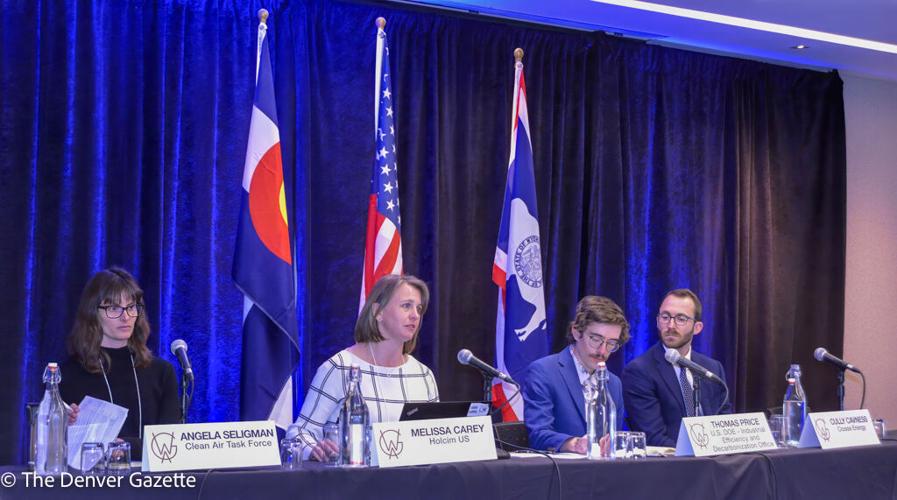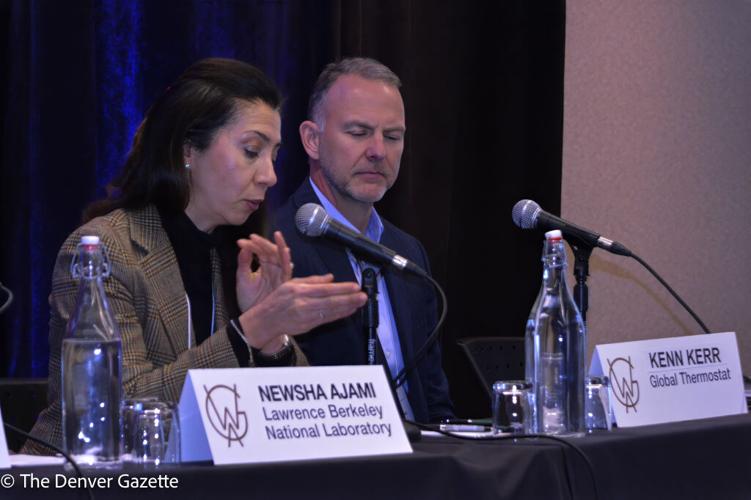Colorado, Wyoming governors host carbon capture summit in Denver
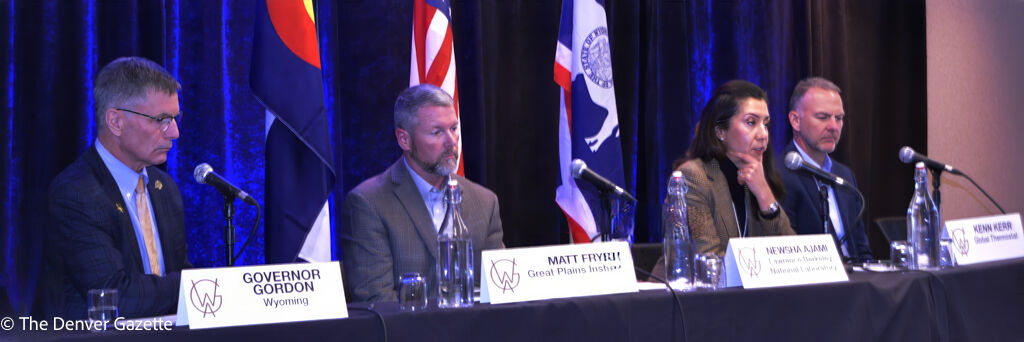
Wyoming Gov. Mike Gordon and panelists Matt Fry, Newsha Ajami, and Kenn Kerr participate in a panel discussion about regional and collaborative approaches to carbon removal at a Western Governors Association workshop at the Art Hotel Denver on February 7, 2024.
Scott Weiser - The Denver Gazette
The governors of Colorado and Wyoming said carbon management in Colorado and the West requires more than just controlling emissions — it also needs active carbon removal to help meet goals.
The governors spoke at a workshop this week, the third of four hosted by the Western Governors Association. The group’s chair, Wyoming Gov. Mark Gordon, has made “carbon capture” his signature initiative for his term.
Direct air carbon capture (DAC) is an energy-intensive method of using various chemical reactions to extract carbon dioxide from the atmosphere using equipment that circulates air, removes the CO2 and compresses extracted CO2 so it can be permanently stored — sequestered — in deep rock formations by injecting it into wells.
This differs from point-source carbon capture in that the proportion of CO2 in the atmosphere (about 0.00042%) is much more diffuse than that of a typical coal power plant, which generally produces concentrations of CO2 in its exhaust stream of 10% to 12%, according to industry research firm Thunder Said Energy. This means that vastly more atmosphere must be circulated through DAC plants to capture an amount equivalent to an average coal-fired power plant’s CO2 output.
In his opening remarks, Gov. Jared Polis, said that point-source carbon capture can be “used to decarbonize even the heaviest industries in a very cost-effective manner — in a very efficient manner.”
“Over the next two days, leaders, thought leaders, companies from across the west are going to discuss strategies for scaling up, direct air capture, building out carbon transport infrastructure, establishing storage solutions that are needed to achieve gigaton scale carbon removal,” Polis said.
Carbon capture and sequestration from point-source, hard to decarbonize industries, such as cement and steel manufacturing, can be “integrated into existing energy systems,” Polis added.
In his opening remarks, Gordon said he’s interested in practical solutions, not “aspirational comments” that can’t be reached.
Gordon, echoing Polis’ opening remarks, said the same point-source carbon capture technology being discussed at the workshop that can be used to decarbonize the waste-gas streams of hard to abate industries can just as easily be installed at coal power plants to remove CO2 from the exhaust gasses.
But Gordon said he is pragmatic about what’s needed to achieve climate goals, saying it’s not just about carbon capture or renewable energy but also about quality of life and the needs of the public for reliable energy.
“We can’t get there with renewables alone,” Gordon told The Denver Gazette. “And so, we’re trying to figure out across the spectrum how we can do a better job with carbon capture, whether it be direct air, whether it be point-source carbon capture — all of these things.”
Gordon expressed worries about the pace at which fossil fuel power generation is being shut down and its effect on consumers.
“The agenda here is removing carbon dioxide from the atmosphere. It isn’t shutting down coal. It isn’t stopping using oil and gas,” Gordon said. “It isn’t trying to figure out how we can completely convert our way of living.”
He added: “Consumers want to have reliable power. They want to have low costs on this. And so, I think what we’re working on is how we can make sure that people have those two things; affordable, reliable power.”
Supporters of the transition away from fossil fuel say the move is necessary to slow or stop climate change and that it is beneficial to the environment. They argue that a cleaner air benefits human health. Finally, they maintain that technological advances have made “renewable” energy cheaper and express optimism that, over time, such sources would become more and more reliable.
Polis’s recently released reports touting progress in curbing greenhouse gas emissions, saying Colorado is “84% of the way toward achieving its 2030 greenhouse gas emissions reduction goal.”
“These reports show both Colorado’s commitment to cutting greenhouse gas pollution and the progress we’ve made and will continue to make to help our state today and for future generations to come,” Polis said last month. “We are doubling down on comprehensive plans that we’ve already set in motion and creating new innovative ways to make our state a healthier place for Coloradans for today and for the next generation.”
Gordon said the black-and-white framing of the issue of coal power versus renewables ignores the needs of consumers for reliable, affordable power.
“It’s being framed very simplistically — let’s stop using fossil fuels and the world gets better,” Gordon said. “And I think really what we have to talk about is how do we maintain our standard of living? How do we remove carbon dioxide from the atmosphere? We can do that on existing point sources. We can do a better job.”
Unlike Colorado, Wyoming has embraced nuclear power as part of the toolbox of solutions to achieve decarbonization without, Gordon said, sacrificing Wyoming’s standard of living. He said there is one nuclear power reactor project currently underway in Wyoming, a molten-salt reactor being funded by Bill Gates and the U.S. Department of Energy.
“There’s a traditional concern, but really for Wyoming generally, the fact is that we can rekindle our domestic uranium industry,” Gordon said. “Currently, the 92 plants that are in our country import all of their fuel from Russia.”
Gordon lauded the bipartisan cooperation in the Western states, saying the WGA has a long history of tackling complicated issues.
More than 120 people attended the two-day “Decarbonizing the West” workshop, which showcased seven round table panels on the status, challenges and future of direct air carbon capture and sequestration.
The Denver meeting on Feb. 7 and 8 was spearheaded by Gordon and Polis, a former WGA chair. Panelists included government officials, representatives of the the direct air capture industry, environmental groups, and scientists. The attendee list also included representatives from at least eight states in the western U.S.
“You look at the historic cooperation that you’ve had between Colorado and Wyoming, Montana, North Dakota, New Mexico, Utah, all of these states hold a crucible of a tremendous amount of energy,” said Gordon. “We are in a powerhouse region. WGA initiatives set the foundation for meaningful and lasting policy development and advocacy — and how remarkable that is at this time in our country?”
He added: “One of the things I think is most important about what WGA brings to these conversations is a sense of practicality, of doability and of honesty, not grandiose statements, not aspirational comments that can’t be reached, but really policy-rich initiatives that talk about what we can do to accomplish the tasks that we’ve set out before us.”




